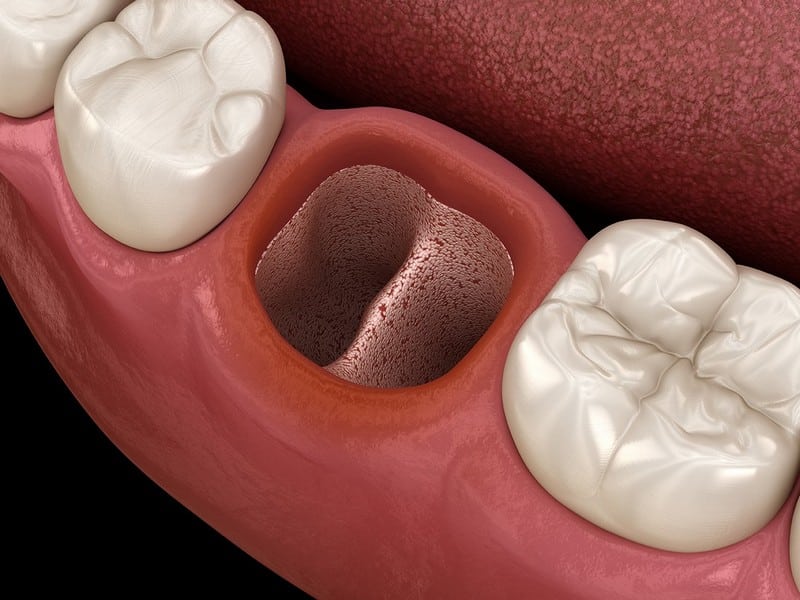An Empty-Looking Socket

Context clues are crucial if you want to catch a dry socket early and potentially treat it before the worst symptoms come. During the two or three-day wait after an extraction, the blood that pools in the socket will eventually form into a clot. However, the clot will partially or completely disappear before the two or three days are up. The easiest way to tell that you’re likely to suffer from a dry socket is the presence of a seemingly empty socket. If you look closer (depending on the location of the socket), you’ll have an easier time figuring out if there’s still a protective layer. An empty-looking socket is the earliest warning symptom that you will suffer from a dry socket. As a result, when you see an empty-looking socket early on, it’s best to contact your dentist to consider various treatment options.
A dry socket’s symptoms can be stressful and frustrating, so it’s never a bad idea to look into treatment as soon as possible. During the first few days, if you notice an empty-looking socket, it’s likely that you’ll start experiencing dry socket symptoms before long.










